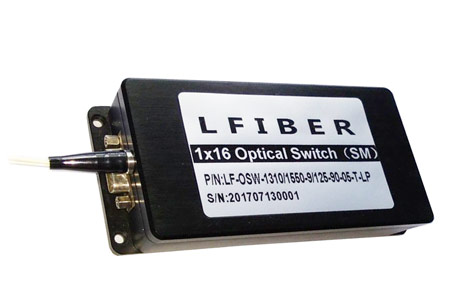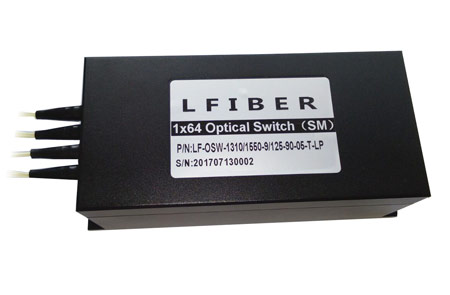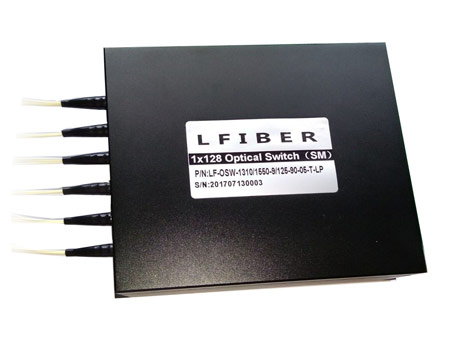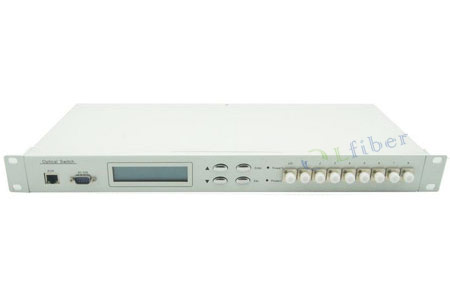Lfiber’s optical switches (singlemode/multimode fiber switches) are micro-optic-based, opto-mechanical switches. These fiber switches offer a cost-effective way to provide flexibility in optical network connectivity. Applications include optical protection, optical channel monitoring, remote fiber test systems (RFTSs), remotely reconfigurable add-drop multiplexers, etc.




Single-Mode & Multimode Fiber Optical Switches
1×2 Single-Mode & Multimode Fiber Optical Switches
TTL Version: 400-2000 nm Single-Mode Fiber Optic Switches (VIS-NIR Wavelength Range)
RS232 / USB Version: 400-2000 nm Single-Mode Fiber Optical Switches (VIS-NIR Wavelength Range)
Rack-Mounted Single-Mode and Multimode Fiber Optical Switches (1U/2U/3U/4U Standard 19-inch Rack)
Polarization Maintaining (PM) Fiber Optical Switches
TTL Control: 400-2000 nm Polarization Maintaining Fiber Switches (Panda PM Fiber, VIS-NIR Spectrum)
1310/1550 nm Polarization Maintaining Optical Switches (TTL)
1310/1550 nm Polarization Maintaining Optical Fiber Switch (RS-232 / USB)
For product customization or special requirement, please contact our sales representatives.